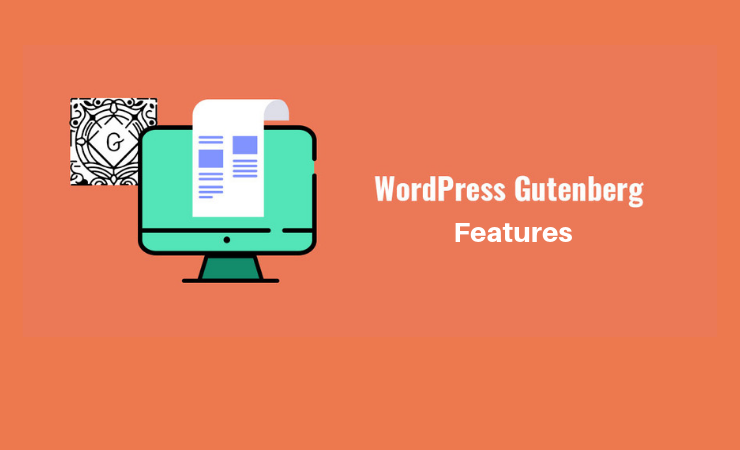Our Blog
7 Amazing Features Of The WordPress Gutenberg Editor

The introduction of the Gutenberg editor is arguably the biggest change witnessed by the WordPress platform in recent years. It is pertinent to know the features of the WordPress Gutenberg editor which has replaced the old default modification tool. A large number of people have been converting PSD to WordPress or migrating from other formats to access the CMS’ user-friendly attributes. The open source platform keeps conducting modifications at regular intervals and enhancing its capabilities to improve its practical nature. However, one element which remained largely unchanged was its visual editor. Many users added page builders to their WordPress installation or switched to block-building platforms to access better content modification solutions. Gutenberg is an attempt by the popular CMS to address this issue and improve its editing potential. Let’s take a look at some of the most exciting features of this tool.
1. Block-based Editing
Gutenberg brings the block-based editing feature to the open-source web development platform. Users can create various types of contents like text, images, embedded files etc. in their own blocks. These blocks can be added to a post or page simply by clicking the “+” icon on top of them. The tool comes with numerous pre-built blocks and also allows people to create their own custom ones. Furthermore, they have to simply drag and drop the blocks to arrange them. This is a significant change from the past when users had to do all the additions in a single area.
2. Copy Content From Other Documents Easily
People can copy content stored in other word processors and paste it into the new default modification tool. Many readers would feel that this is nothing new as it was possible in the old editor also. However, many times the copied matter did not retain its original appearance. The new modifier has rectified this problem. Users can now copy and paste material from anywhere without worrying about its presentation. They do not have to waste time in formatting and restructuring the imported content. This helps in saving time and improves the productivity of the users.
3. Drag And Drop Images
One of the most time-consuming tasks in the old editor was adding images. People who dragged and dropped pictures had to wait while the media library pop-up imported the images. Then they had to attach the pictures to the text material by using the “Add” option in the toolbar. Instead of this long drawn procedure, users now have to drag and drop the images at a chosen location. They do not have to undertake any extra steps for the purpose. This makes it easier for individuals who place a lot of pictures to explain or enhance their written material.
4. Easy Dynamic Editing Options
People who worked with the earlier content modifier will remember its toolbar with editing options. This static bar was present on top of the main editor and could be confusing for new users. One of the most significant features of the WordPress Gutenberg editor is the availability of dynamic editing options. An individual does not have to locate a requisite button for making a change. Instead, he/she will be presented with only the options for the specific content block being modified. For instance, when adding some text, only the necessary options for altering written matter will be shown.
5. Convenience Of Reusable Blocks
WordPress is a convenient web building platform and Gutenberg embodies this quality. Users have the option to create a block and use it again in the future. They can create tables, CTAs or any other content block and save it to the Reusable Blocks library. Whenever they want to use it again, they have to access it from the library and insert it into the new matter. This will be especially useful for people like bloggers who have to fashion similar material regularly.
6. Facility To Create Anchor Links
A notable feature absent from the old editor was the ability to create anchor links. People who added a table of contents or wanted to place links to a different section had to use plugins. They do not need to depend upon functionality extenders for this purpose now. The new modifier allows them to add HTML anchors to their matter easily. This will be useful for users who regularly publish long-form content.
7. Feature Of Document Outline
The document outline feature is a convenient attribute of the new editor. Clicking on the information tab accompanying a content displays all the headings created within it. Users also get to know the total number of paragraphs and the word which make up that content. It also shows the number of blocks that have been used in composing the matter. People can use the feature to navigate to a heading and modify it. This helps in getting a quick general overview of the content.
Conclusion
These are just some of the notable features of the WordPress Gutenberg editor. The new tool is much more versatile and flexible than the older one and users must switch to it to ease their workload and enhance their productivity.